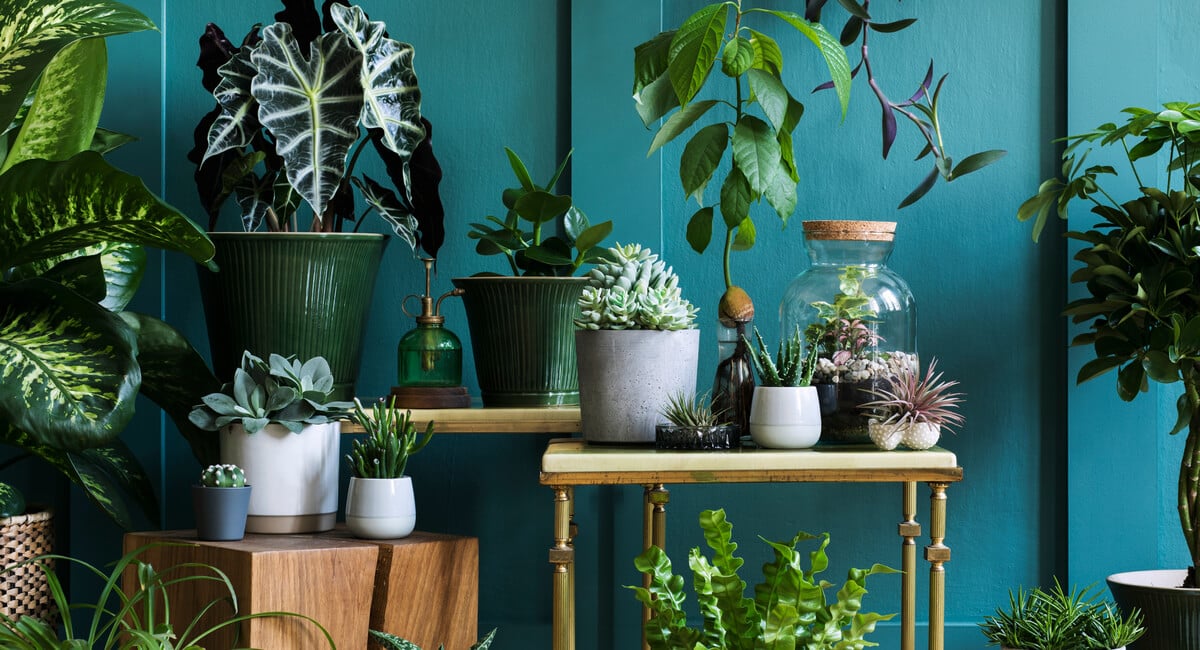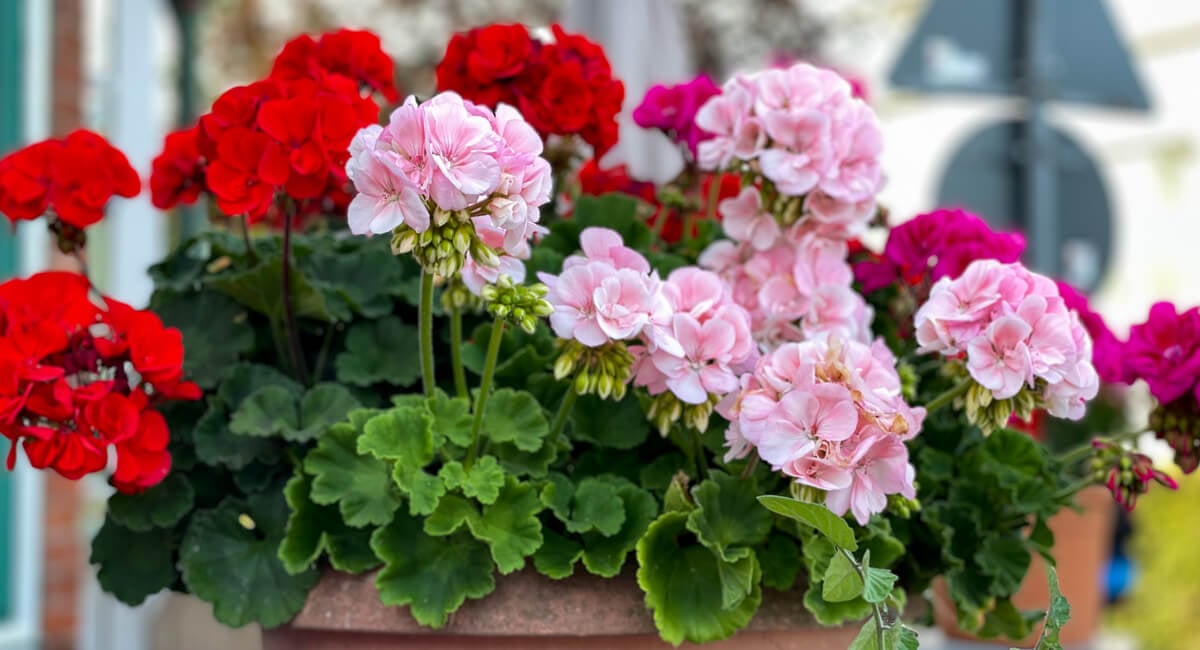As the temperature drops and the days get shorter, it’s important to take care of your outdoor plants. If you’re a passionate gardener, you probably don’t want to lose your plants to the harsh winter weather. Fortunately, many outdoor plants can last the winter if you bring them inside and tend to them properly. You should know which plants need to be taken indoors, when you should bring them in, and how you can complete this task safely and effectively.

When to Bring Plants Inside
Different plants are able to withstand different temperatures. However, the general rule is to bring plants inside when the nighttime temperature drops below 55 degrees Fahrenheit. Alternatively, you could try to bring the plants inside 50 days before the first frost arrives. You can look up the average first frost date for your region to predict when you should bring your plants indoors.
Not all plants are able to be preserved through the winter, but many can thrive indoors as long as you transition them carefully. Here are seven outdoor plants you should bring inside in the winter:

1. Palms
Unless you live in a region that experiences very warm winters, your potted palm trees should come inside when the weather gets cold. Palms need lots of light, so they should be placed in an area of your home that gets plenty of natural sunlight. Be sure to water your palm trees regularly throughout the winter as palms do best in moist soil.

2. Herbs
Herb gardens are a practical and rewarding summer venture, but most herbs don’t do well in cold temperatures. If you want your herbs to last the winter, you should bring them indoors before the first frost. Herbs do well in bright conditions, so transitioning your herb garden to a windowsill is a great idea.

3. Succulents
Succulents grow naturally in hot and dry conditions, so they tend to struggle when left outdoors in the winter. Although many succulents are very durable, it’s best to bring them inside. Not only does this protect them from the cold temperatures, but it also ensures they don’t suffer from the excessive moisture from frost. However, you should keep the plants outside for as long as possible before winter because the decreasing temperatures and increasing darkness will trigger dormancy.

4. Citrus
Citrus trees flower and sometimes produce fruit in the winter, but they’re still vulnerable to winter conditions. You might be able to cover your outdoor citrus trees with a plant protector, but any exposure to harsh weather may affect their fruit development in the next year. To keep your citrus plants healthy, bring them indoors into a bright and warm room. High humidity is also important for citrus plants, so you should regularly mist the leaves and keep them away from cold drafts.

5. Geraniums
Geraniums prefer cool, dark, and dry conditions throughout the winter, which makes them fairly easy to store. Before the first frost, dig up your geraniums and remove as much soil from the roots as possible. Then, place the plants in a paper bag or cardboard box. You can store the plants in your garage, basement, or another cool indoor location.

6. Cannas
Cannas are a beautiful addition to any garden, but they won’t last the winter if kept outside. To save these plants from the winter weather, bring them indoors before the temperature drops below 55 degrees Fahrenheit. Like geraniums, cannas can be stored in bags or boxes. You can even place cannas in large garbage bags to preserve moisture.

7. Begonias
Begonias are very sensitive to frost and cold temperatures, so you should bring them indoors well before the first frost. You should store begonias indoors once they hit their dormancy stage. At this point, their leaves will turn yellow and fall off. You can place the plants in shallow trays or containers. If you have outdoor potted begonias, you can simply bring the pots indoors and keep them in a bright location.

Tips for Bringing Plants Inside in the Winter
Some plants are more durable than others, but you should always be careful when transferring plants to a new environment. A sudden change in conditions can be shocking to a plant, so you should take great care when bringing your outdoor plants in. Here are some tips for successfully transitioning your plants to an indoor environment:
1. Bring Them in Gradually
If possible, you should gradually transition your plants to the indoors. This requires some careful planning and preparation, so it’s best to start the process early. Before you bring them inside, place them in a shaded outdoor area for a couple weeks so they can get used to lower levels of light. Then, start bringing the plants in overnight and taking them back outside during the day. After a week or two, you can bring them inside permanently. This gradual transition will greatly reduce the risk of shock.
2. Trim and Rinse
Refreshing and cleaning up your plants before bringing them indoors is a great way to keep them in good shape for the winter. Trim away any dead or unhealthy leaves and branches, and gently rinse the leaves to remove dirt and dust. This is also a good opportunity to give the plants a thorough watering before you bring them inside.
3. Check for Pests
Aphids, spider mites, and other pests can quickly destroy your plants. Outdoor plants are much more vulnerable to pests than indoor plants, so you should check your plants carefully before bringing them indoors. Be sure to inspect the stems and undersides of the leaves for signs of pests. If you do see any bugs, use an insecticidal spray to get rid of them.
4. Refresh the Soil
Refreshing the soil will help keep your plants healthy through the winter. If a plant is starting to outgrow its pot, now is a good time to repot it and replace the soil. If you’re keeping the plant in the same pot, you can top it off with fresh, nutrient-rich soil.
5. Choose the Location Carefully
Not all locations in your home are equal when it comes to plants. Some plants need bright and direct sunlight, and others thrive in lower lighting conditions. Most need consistent air circulation or they’ll develop fungus and rot. Plants generally prefer higher humidity, too, which can be challenging because indoor air tends to be very dry in the winter. Think carefully about which areas of your home will be most supportive for your plants. If necessary, consider using a fan or a humidifier to improve the indoor conditions.
You don’t have to sacrifice your plants every winter. Instead, care for them indoors until the weather warms up again. Although not every plant can successfully be brought inside, many can and should. If you ensure that the indoor environment is safe and healthy for each of your plants, you can keep them in great condition throughout the winter.


